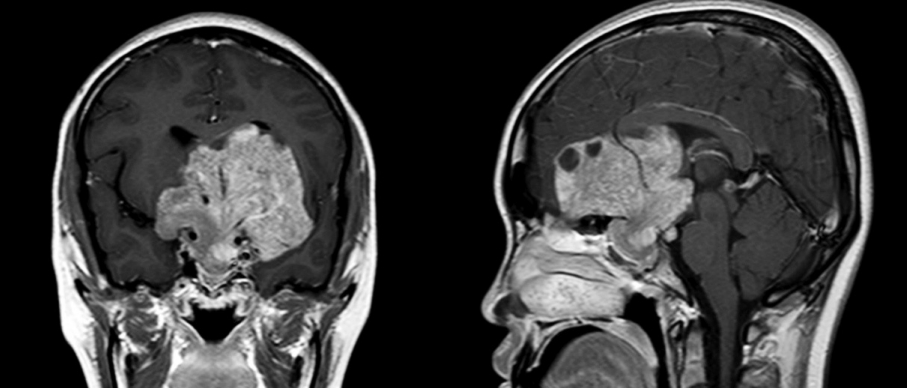A 17-year-old girl visited the sleep clinic because of excessive daytime sleepiness (EDS) for five years. She went to bed at 22:00 and woke up at 10:00. Recently sleepiness got worse. She had no cataplexy, sleep hallucination or sleep paralysis. She had been taking a nap about 3–4 hour, but she had not felt refreshed. She denied of snoring or witnessed apnea. Epworth Sleepiness Scale was 17. She reported that visual acuity in the left eye has decreased since six months ago. In medical history, she had an irregular menstrual cycle and complained of amenorrhea recently. Central hypersomnia due to medical disorder should be excluded considering decreased visual acuity and amenorrhea. For exclusion of central hypersomnia, brain MRI was taken (Fig. 1). Patients with sustained damage to the hypothalamic/pituitary regions develop EDS regardless of the etiology [1]. Increased daytime somnolence or sleep disturbances may continue despite tumor removal [2,3]. Physicians should give an attention to the sleep symptoms to prevent the delay in the diagnosis and effective intervention.











